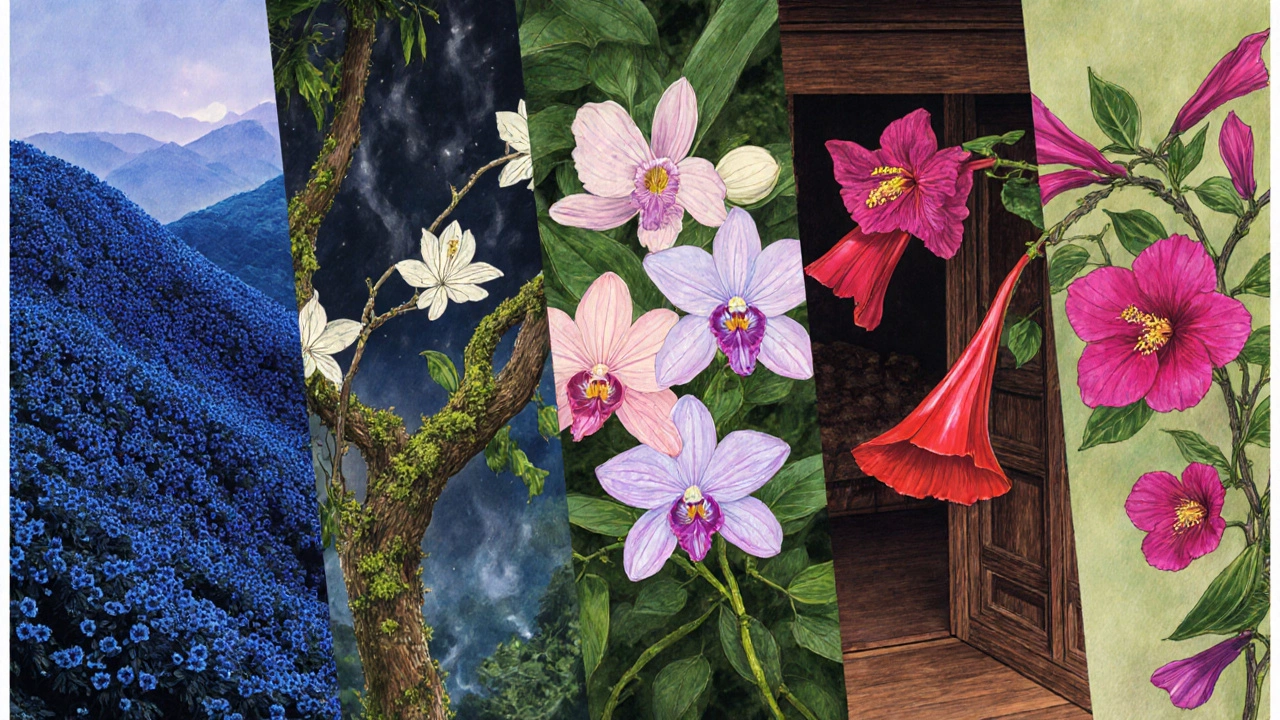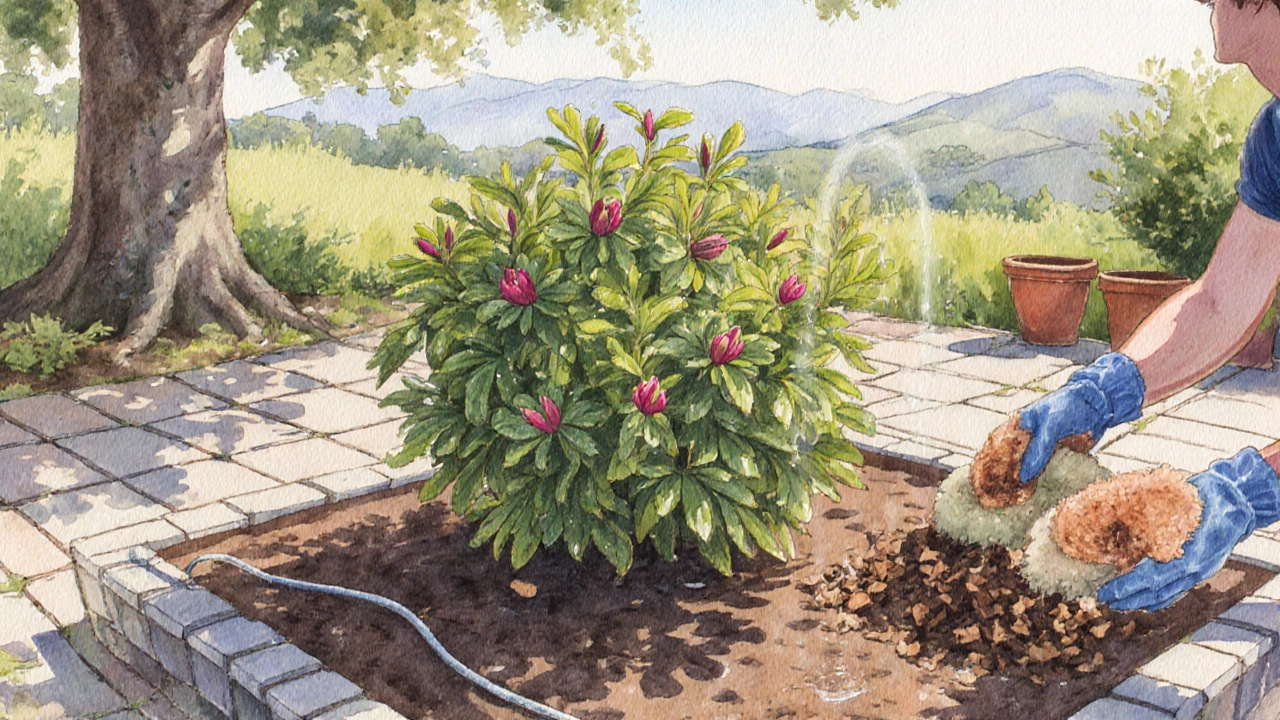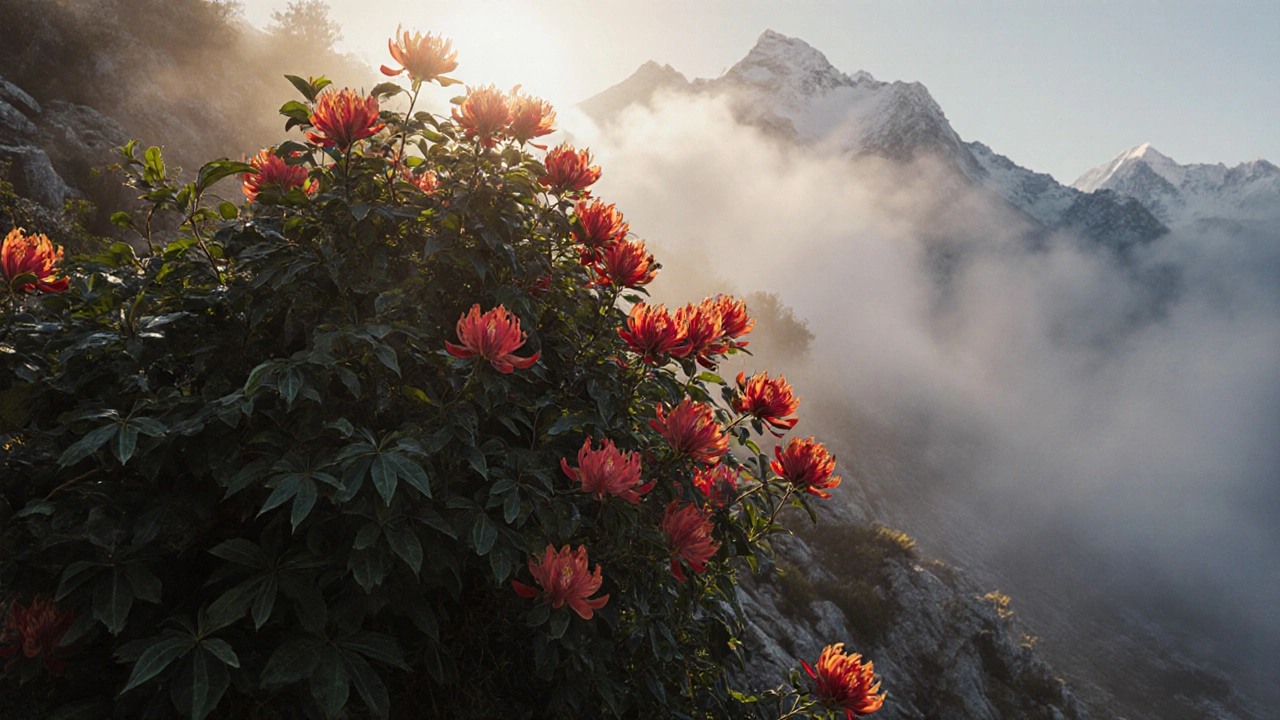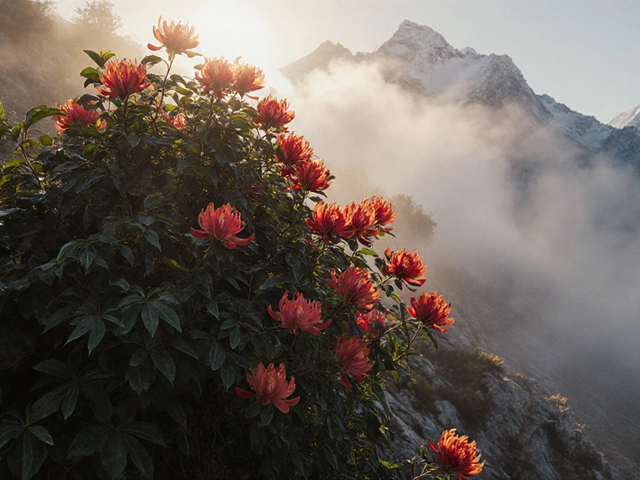India's Most Beautiful Plant Finder
Find Your Perfect Plant Match
Answer a few quick questions to discover which of India's most beautiful plants is ideal for your garden conditions.
When people ask “what is the most beautiful plant in India?”, the answer often points to Rhododendron arboreum, a stunning evergreen shrub that bursts into crimson and orange flowers across the Himalayas. Rhododendron arboreum is native to the northeastern states, thrives at elevations of 1,500-3,600 m, and is celebrated for its glossy leaves and profuse, fragrant blossoms. It’s hard to beat that dramatic splash of colour against mist‑covered slopes.
The search for the most beautiful plant India often lands on this Himalayan wonder, but the country’s biodiversity offers several worthy rivals. In this article we’ll explore what makes a plant “beautiful”, compare five standout candidates, and give you practical tips to grow the champion in your own garden.
How We Judge Plant Beauty
Beauty is subjective, yet gardeners tend to agree on a few concrete factors:
- Colour intensity - vibrant, saturated hues that catch the eye.
- Flower shape - unusual or striking morphologies.
- Seasonal impact - whether the plant blooms at a time that lifts the landscape.
- Fragrance - scent adds a hidden dimension.
- Adaptability - a beautiful plant that also thrives in local conditions earns extra points.
Using these criteria, we sifted through regional floras, horticultural societies’ shortlists, and on‑ground observations from gardeners across the subcontinent.
Top Contenders for India’s Most Beautiful Plant
Below are five plants that consistently top beauty polls. Each paragraph includes a brief definition with microdata for the first mention.
Strobilanthes kunthiana (commonly called Neelakurinji) is famous for its once‑in‑12‑years mass blooming of deep blue flowers on the Western Ghats. The phenomenon turns entire hillsides into a sapphire carpet, a sight that draws photographers from around the globe.
Nyctanthes arbor-tristis (Night‑blooming Jasmine) produces fragrant white‑cream flowers that open at dusk and fall to the ground by morning, creating a carpet of delicate petals that perfume the night air.
Cymbidium orchid is a group of epiphytic orchids cherished for their large, long‑lasting blooms in pastel shades. In the humid forests of Northeast India, they adorn trees like living jewellery.
Bougainvillea is a thorny, fast‑growing vine that explodes in magenta, orange, or purple bracts. It clings to walls, trellises, and balconies, turning any structure into a living mural.
Hibiscus rosa‑sinensis offers trumpet‑shaped flowers that range from scarlet to pink, white, and yellow. The plant is a staple in Indian courtyards, symbolizing hospitality and vitality.
The Standout Choice: Rhododendron arboreum
While each contender shines in its own right, Rhododendron arboreum edges ahead because it combines vivid colour, evergreen foliage, and a broad growing range that spans from the cool Himalayas to subtropical hill stations. Its flowers, ranging from bright scarlet to deep orange, appear in dense clusters that can cover a whole shrub, creating a wall of fire against misty backdrops.
Beyond aesthetics, the plant is hardy: it tolerates -5 °C to 20 °C, survives monsoon showers, and requires relatively low maintenance once established. Its cultural significance adds intrigue-many Indian poets and painters have immortalized it in verses and canvases.

How to Grow Rhododendron arboreum in Your Garden
Even if you don’t live on a mountain slope, you can enjoy this champion with a few adjustments.
- Site selection: Choose a partially shaded spot with filtered sunlight. Afternoon shade protects the foliage from scorching.
- Soil: Aim for acidic, well‑draining soil (pH 4.5-6). Amend garden loam with peat moss, pine bark, or composted oak leaves.
- Planting: Dig a hole twice as wide as the root ball. Place the shrub, back‑fill with amended soil, and water thoroughly.
- Irrigation: Keep soil consistently moist during the first two growing seasons. Drip irrigation works best to avoid waterlogging.
- Fertilisation: Use a slow‑release acid‑loving fertilizer (e.g., 10‑10‑10) in early spring and again after flowering.
- Pruning: Lightly prune after blooms to shape the plant and improve air circulation. Remove any dead or diseased wood.
- Pest management: Watch for aphids and spider mites. A neem oil spray every two weeks usually keeps them in check.
With these steps, most gardeners in northern India, the Himalayan foothills, and even cool‑climate regions of the Deccan can enjoy a miniature mountain vista.
Comparison of India’s Top 5 Beautiful Plants
| Plant | Scientific Name | Primary Region | Bloom Season | Height (m) | Notable Feature |
|---|---|---|---|---|---|
| Rhododendron arboreum | Rhododendron arboreum | Himalayan states | April-June | 2-6 | Vibrant scarlet‑orange clusters |
| Neelakurinji | Strobilanthes kunthiana | Western Ghats | July (once every 12 years) | 1‑2 | Mass blue bloom covering hillsides |
| Night‑blooming Jasmine | Nyctanthes arbor‑tristis | All India | Evening (Oct‑Mar) | 3‑6 | Strong sweet fragrance at dusk |
| Cymbidium Orchid | Cymbidium spp. | Northeast forests | Jan‑May | 0.5‑1.5 (epiphytic) | Large, long‑lasting pastel flowers |
| Bougainvillea | Bougainvillea glabra | Coastal & urban areas | Year‑round (when warm) | 3‑12 (vine) | Bright, papery bracts in many colours |

Quick Takeaways
- Rhododendron arboreum tops the list for colour, fragrance, and adaptability.
- Neelakurinji offers a rare, once‑in‑decade visual spectacle.
- Night‑blooming Jasmine excels in fragrance and night‑time appeal.
- All five plants thrive in specific micro‑climates; match the right one to your garden zone.
- Proper soil acidity and moisture management are crucial for most of these beauties.
Frequently Asked Questions
Which Indian plant flowers the longest?
Bougainvillea is virtually evergreen in warm climates, producing colourful bracts almost year‑round when temperatures stay above 15 °C.
Can I grow Rhododendron arboreum in a low‑land garden?
Yes, if you replicate its native conditions: provide acidic, well‑draining soil, partial shade, and protect it from extreme heat. Using a raised bed or container can help control soil pH.
When does the Neelakurinji bloom?
The mass blue flowering occurs every 12 years, most recently in 2021. The next expected bloom will be in 2033.
Do Night‑blooming Jasmine plants need special care?
They are relatively low‑maintenance. Keep the soil consistently moist, prune after flowering, and they’ll keep coming back with fragrant evenings.
Which of these plants is best for a small balcony?
Bougainvillea or a dwarf variety of Cymbidium orchid works well in containers. Both tolerate limited root space and provide a big visual punch.


